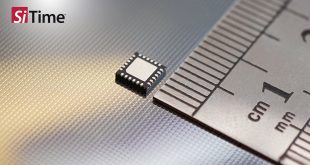PPE can be the difference between a fatality and staying safe in hazardous workplaces.
 The electrical, construction and mechanical industries are particularly dangerous, with many hazards present and a life changing injury could quickly end the ability to perform the tasks correctly. Electrical hazard environments require arc flash face and head personal protective equipment (PPE) to protect workers from environmental hazards, particularly in the instance of an arc flash occurring. Here we will discuss why this is protection is necessary in certain environments.
The electrical, construction and mechanical industries are particularly dangerous, with many hazards present and a life changing injury could quickly end the ability to perform the tasks correctly. Electrical hazard environments require arc flash face and head personal protective equipment (PPE) to protect workers from environmental hazards, particularly in the instance of an arc flash occurring. Here we will discuss why this is protection is necessary in certain environments.
Why wear a face shield and head protection?
Most tasks undertaken by the engineers working in an area with an arc flash risk will normally involve the head being near the workspace where the arc flash could occur. The face and hands will typically receive the full force of the arc flash with the shortest range, so the risk of damage is obviously far higher. Arc flash face shields and balaclavas are therefore essential to provide protection of the face and skull from the blast, molten copper spatter and radiation that could be up to three times the temperature on the surface of the sun. Arc rated gloves are another important part of the protection package – in both cases of injury the victim may well survive but will suffer the effects of being irreversibly physically damaged that will sadly make massive changes to their remaining lives.
Different types of arc flash face and head protection
A large amount of electrical working environments requires arc flash protection, with several PPE options available such as arc flash clothing from Reece Safety to protect you in an arc flash environment, from switching suits to face shields. All of them will be selected based on the rating needed to address the identified incident energy calculated during the arc flash survey. All PPE is classed as the last line of resistance and other fundamental steps will be taken to eliminate this risk beforehand.
Arc rated hoods
Arc rated hoods can be worn to protect the full head and will protect the face, head, chin and extending down to the neck that will protect from molten metal splatter, high speed debris, flames and radiation. Arc rated hoods can start with an arc rating of 14 cal/cm2 and the major benefit is that the user does not need to wear a balaclava, as the hood covers all the exposed areas with full protection.
Arc flash switching suits
Switching suits are a complete kit that provide an arc flash hood, jacket, dungarees, and gloves. Suits are often available with different arc flash ratings to suit each environment and the hazards that may occur, so it is vital to find the correct rating that you will need in your workplace. Most switching suits are used in PPE arc category 4 areas where a protection greater than 40cal/cm2 is required. They will often be stored in the substation where they need to be used – making sure that the extra PPE is available every time it is required.
Arc rated face shields
Face shields should be worn as protection against hazards arising from an arc flash: molten metal splatter, high speed debris, IR and UV radiation and sonic boom from the explosion to name a few. A common oversight is for the user to wear an arc rated balaclava under the helmet. It is essential in protecting the neck but also the back of the skull where the radiation will engulf the victim and caused major injuries at this unprotected spot. When wearing a balaclava, the front should be pulled up over the mouth to provide additional protection for the face. An electrically rated non-vented helmet completes the protection.
In conclusion, facial and head protection is vital when working with electrical hazards, particularly when arc flashes may occur, so investing in the correct arc flash PPE is essential for everyday use in such a hazardous industry.
 CIE Components in Electronics
CIE Components in Electronics



